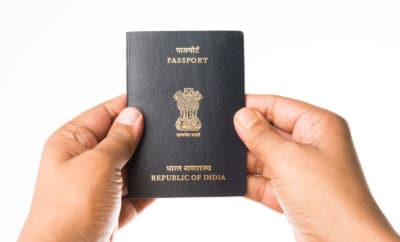Health
Expats Coming to India For Female Genital Mutilation: Report

Representational Image
Photo: Bigstock
Bohra expats and foreign women come to India for female genital mutilation, according to a recent report.
India is becoming a hub for female genital mutilation (FGM) and cutting (C) for Bohra expats and foreign women, according to a report that was released by Indian Member of Parliament Shashi Tharoor on Feb. 5. The report, titled “The Clitoral Hood a Contested Site: Khafd or Female Genital mutilation/Cutting (FGM/C) in India,” states that presence of laws against FGM and cutting in Australia, the United States and Canada, and a lack of them in India, is contributing to the arrival of Bohra expats and foreign women to the country for the procedure.
The report was compiled by independent researchers Lakshmi Anantnarayan, Shabana Diler and Natasha Menon along with WeSpeakOut, a coalition of Bohra women against FGM and the women’s rights organization Nari Samata Manch.
Khafd, as the Bohra community, a Shia Muslim sect, calls it, is a procedure that removes either partially or completely, the clitorial hood once the girl hits the age of seven.
The analysis, which was released on the eve of the International Day for No Tolerance for FGM, saw participation from 13 locations across the states of Gujarat, Madhya Pradesh, Maharashtra, Rajasthan and Kerala and expats from Canada, the United Arab Emirates, and the United States. The countries were chosen for their significant Bohra diaspora population.
Out of the 94 participants, 83 were women survivors of FGM aged between 17 and 89 years while 11 were men. All the interviewees had 81 daughters — out of whom six were too young, 55 underwent FGM and 20 did not. It was concluded that nearly 75 per cent of the daughters have gone through the ordeal.
The report cited cases of children being brought on vacation to India by expats to undergo the ritual, and has quotes from respondents talking of relatives who want to bring their children to India for khafd as laws in their current countries are stringent regarding FGM/C.
The two cases that especially brought FGM/C to attention was a landmark trial in Australia in 2015, and the case that emerged last year in the United States of Jumana Nagarwalla, and two other accomplices who were involved in the genital cutting of more than 100 girls.
“Until India bans the procedure, the country will serve as a hub and witness an increase in numbers of expat girls being brought in to be subjected to FGM/C,” the report says.
The Ministry for Women and Child Development had submitted to the Supreme Court in December last year that there is no official data by national Crime Records Bureau to support the existence of the practice in India. Contrary to this submission, the report says that a majority of Bohras practice Type1 FGM/C (partial or total removal of the clitoris and/or clitoral hood) while some practice Type4 FGM/C (pricking, piercing, cauterisation).
The data showed that girls underwent FGM/C when they were about seven years old and around 97 per cent of women recall the experience as being painful. They also reported painful urination, physical discomfort, difficulty walking and bleeding immediately after the procedure. About 10 per cent of women spoke of having frequent urinary tract infections, incontinence, and one case of excessive bleeding.
About 33 per cent of the women said that FGM/C has caused problems in their sexual lives and left a psychological impact. Several women listed low sex drive, inability to feel sexual pleasure, difficulty trusting sexual partners and over sensitivity in the clitoral region. The participants also noted feelings of fear, anxiety, shame, anger, low self-esteem and inability to trust people.
The report also demonstrates Bohra men’s participation in FGM/C, saying that the men play a role in the maintenance and propagation of the practice at personal and political levels in either active or passive capacity.
The Dawoodi Bohra Women’s Association for Religious Freedom (DBWRF) refuted the report in a statement issued on Feb. 6.
“Khafd is a harmless cultural/religious practice unique to the Dawoodi Bohra community. We reiterate that there is no place for any kind of mutilation in the Dawoodi Bohra religion and culture,” Samina Kanchwala, secretary, DBWRF was quoted as saying in the Indian Express.



